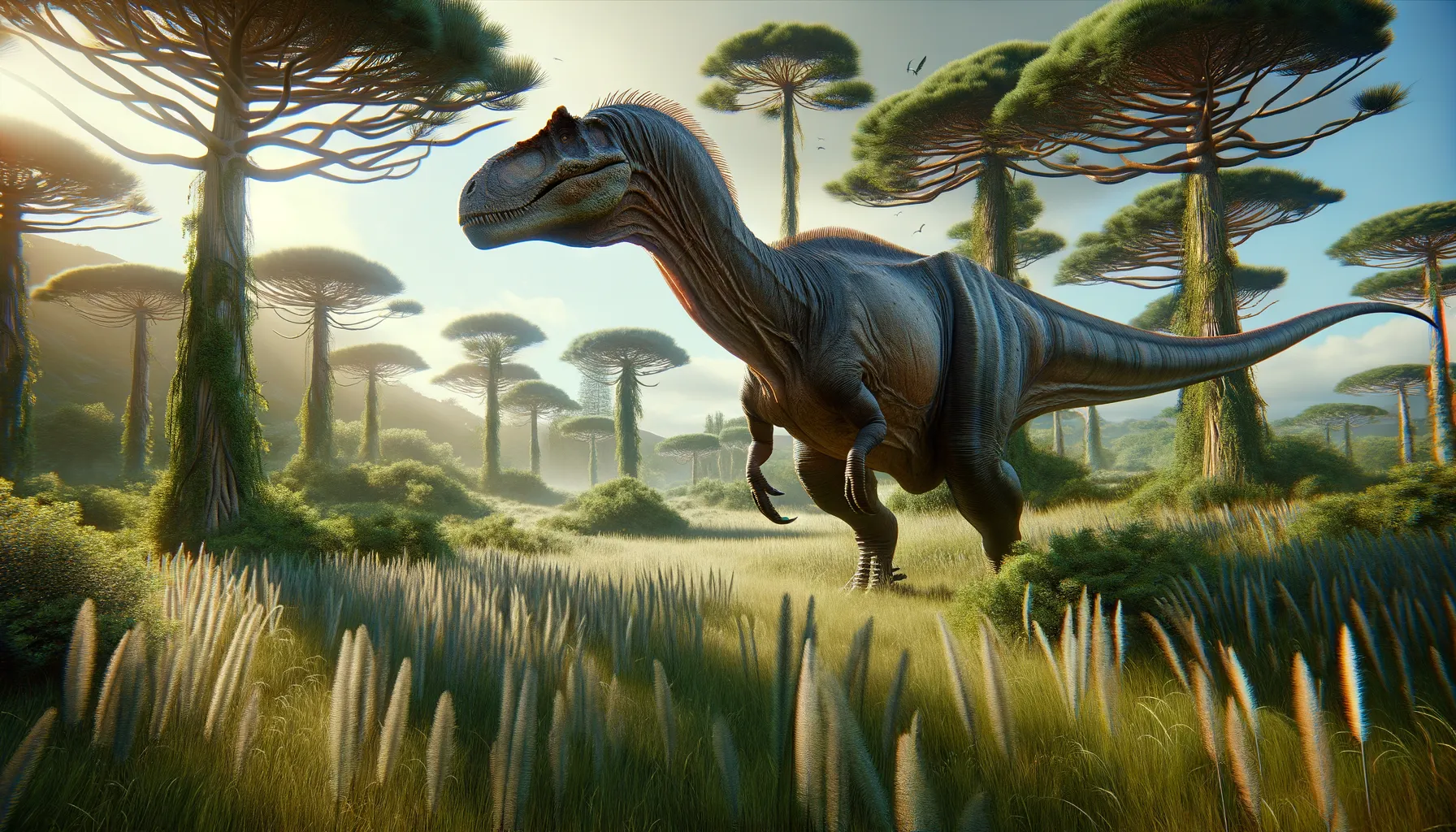
Ornithotarsus
Giant of the Cretaceous fields!
Period
Cretaceous
Length
Similar to a double-decker bus.
Height
Stood twice the height of an average human.
Weight
Comparable to an African elephant.
Ornithotarsus was a large herbivorous dinosaur that roamed Earth during the Cretaceous period. It was characterized by its robust legs and long neck, making it an efficient grazer of tall vegetation. Fossil evidence suggests it was a communal animal, moving in herds for better protection against predators. Despite its size, it could sustain a reasonably high speed to escape threats.
Diet
As a herbivore, it primarily fed on terrestrial vegetation, including ferns and conifer branches. Its long neck allowed it to reach high foliage that many other dinosaurs couldn't access.
Hunting
Being a herbivore, Ornithotarsus did not hunt but utilized its size and speed to forage widely. It relied on its ability to access tall vegetation rather than engaging in hunting behavior.
Environmental challenges
Ornithotarsus faced challenges such as fluctuating climates and competition for food resources. Predatory dinosaurs of the time necessitated constant vigilance and sometimes a quick retreat. Droughts or environmental changes might have forced them to migrate in search of food and water.
Speed
Average speed for a large dinosaur.
Lifespan
Estimated to be around 70-80 years.
First discovery
Discovered in the late 19th century in North America.
Fun Facts
- Ornithotarsus is known from very limited fossil remains, making it a mystery to paleontologists.
- The name 'Ornithotarsus' means 'bird ankle', hinting at a unique feature in its leg anatomy compared to other dinosaurs.
- It lived during the Late Cretaceous period, millions of years ago, alongside other fascinating dinosaurs.
- Ornithotarsus is believed to have been a herbivore, possibly feasting on the lush plant life of its time.
- Despite its limited remains, scientists are excited about what Ornithotarsus can reveal about dinosaur evolution.
- Ornithotarsus fossils have been primarily found in the United States, sparking interest in North American dinosaur diversity.
- This dinosaur helps illustrate the diversity and complexity of life during the Cretaceous period.
Growth and Development
Young Ornithotarsus grew rapidly, likely as a defense strategy against predators. As they matured, their growth rate slowed, focusing resources on sustaining their massive bodies. Fossils indicate they achieved full size within a decade.
Habitat
Ornithotarsus thrived in forested regions with abundant food and open spaces for its large herds. These habitats supported diverse plant life, essential for their sustenance. Seasonal migrations might have been part of their survival strategy.
Interaction with other species
They shared their environment with both herbivorous and carnivorous dinosaurs, forming complex ecosystems. While they often traveled in herds for safety, smaller species possibly benefited from their movement patterns. Their presence likely influenced the distribution and behavior of nearby species.
Natural lifespan
Their natural lifespan was estimated to be around 70 years.
Reproduction
Reproduction involved laying eggs, possibly in communal nesting sites for enhanced protection. Hatchlings were vulnerable and required the safety of the herd. Parental care within these groups might have ensured higher survival rates for the young.
Social behaviour
They were likely social creatures, moving together in large herds. This behavior provided safety in numbers and facilitated information sharing, such as locating resources. Communication among the herd members could have been crucial for coordination.
Fossil locations
Fossils of Ornithotarsus have primarily been found in North America, mostly in areas that were once lush plains or river valleys. These discoveries provided insights into their vast habitats and potential migratory patterns. The sites showed evidence of herd behavior through the dense concentration of remains.
